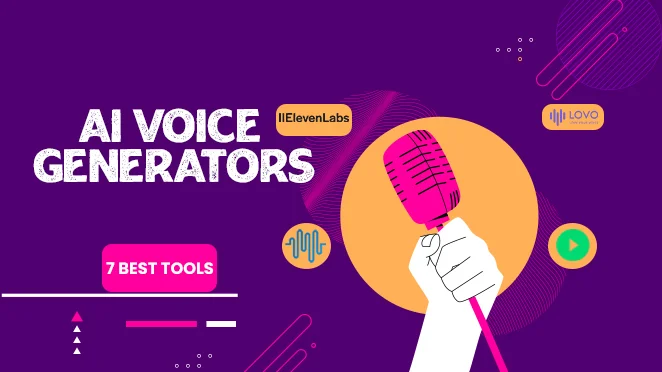Imagine having to bake a birthday cake. You’ll have two options: one is to purchase a cake mix and mix it using milk and eggs, and the second option is to gather all the ingredients on your own to bake the cake. You can enhance it with espresso powder, coconut milk, and fresh fruits, right?
It’s the testament of prompt engineering. It uses a simple prompt and adjusts it for an AI generator. As a result, you’ll get better and more effective results. That’s because, with prompt engineering, you’re using your words to make a request and get the favorite results.
For instance, you can use prompts on ChatGPT to write full articles, papers, and resumes. On the other contrary, DALL-E lets you make your own images. Needless to say, anyone can become a prompt engineer with a bit of learning. So, if you would like to read more on prompt engineering, this guide will help you!
What is Prompt Engineering?
This is a recent technique used in the AI engineering world. It’s the long yet seamless process of optimizing the language models with on-point prompts. One can also add desired outputs in the prompts. It also improves the input for creating images and text. With time, generative AI is improving, which means generating different types of content will be easier.
To name a few, it will be easier to make 3D graphics and write down instructions for robots. In addition, the automation bots can be generated to streamline robotic processes. Moreover, it will be an absolute breeze to write scripts. While everyone is trying dive into this career, it’s not possible without understanding the purpose.
It helps optimize the large language models, also known as LLMs, for multiple uses. It is also suitable for zero-shot examples by using specific data. Consequently, the accuracy of LLMs will become better. Also, measuring and improving the results will become convenient, showing better performance.
On the contrary, it’s important to note that prompt engineering for generative tools will have an extensive use case. That’s because more people are already using the available tools. It wouldn’t be wrong to call it a balance of art, modifiers, coding, and logic. The prompts include different types of input data, such as images and text.
The widely available AI tools can easily answer text-based queries. However, what’s surprising is that using the same prompt on different generative tools will give you different results. It happens as every tool has its own modifier, resulting in different results. Also, you can work with different layouts, perspectives, tones, and words.
How Does It Work?
To understand the process of prompt engineering, we have to focus on generative models as well. These models have transformer architectures, which helps them understand the small details in text. In addition, this model helps them process an immense amount of data because there are neural networks in these architectures.
Having said that, an AI prompt engineer can change the results. It helps ensure that AI tools promise meaningful and effective results. In fact, different AI prompting Tools & techniques are used to deliver promising results, such as top-k sampling, tuning of model parameters, and tokenization. It also makes space for foundation models.
For those who don’t know, foundation models are LLMs that use transformer architecture. They have all the information the AI system needs for generating content. On the other hand, the generative models use natural language processing. They use text to show results/content.
The combination of architecture, data science, and ML algorithms. This combination helps them understand the prompts and use the data to create output. This output can be in picture or text forms. For instance, DALL-E uses the language model and stable diffusion, so you can create images with the help of texts.
As far as prompt engineering is concerned, one needs technical knowledge. In addition, they need to have vocabulary and better information about natural processing. Lastly, they need to understand the context to deliver seamless results.
The Technicalities of Prompt Engineering
While you need to know the language for prompt engineering, you must understand the technicalities as well. There are five technicalities associated with it, such as;
Tokenization
This is about the training of data. The language models use data, as it’s split into small pieces. These pieces are called tokens. The tokenization can be based on bytes and words, and it impacts how the tool interprets the text input and prompts. For example, the words with different tokenization will lead to different results.
Model Architectures
ChatGPT and Bard depend on transformer architectures. These architecture help them operate with data to understand multiple contexts. This is because these architecture models have self-attention mechanisms. Moreover, the prompt engineers need to have proper information about these architectures to write effective prompts.
Top-K Sampling
When the output is being generated, the tools use top-k sampling and temperature settings. It helps check the random details in the prompt to deliver diverse results. In most cases, the high temperatures result in less accurate but more diverse results. For this reason, engineers tend to adjust these factors to get the best results.
Model Parameters
There are millions of parameters in language models. They can help refine the training, which has a direct impact on the quality of answers.
Gradients
The response to the prompt is impacted by the gradients as well as loss functions. These are mathematical factors that help with the learning process. It’s not the engineer’s job to adjust the gradient and functions directly. However, if they understand the influence of these factors, the prompt response will be better.
Examples
If you aren’t able to understand the purpose of prompt engineering, it’s better to look at a few examples. The prompts are used for text and image-based generative tools.
1. Text-Based Tools
The text-based tools include Bard and ChatGPT. Some of these prompts include the following;
- Can you help me write a professional resume for a content writer?
- Write an on-point and professional summary for a content writer working in the pharmaceutical industry.
- It looks great. Refine it to 70 words only.
- Perfect. The last thing, just make it more formal and professional.
This will help you create a professional resume in a few clicks.
2. Image-Based Tools
These tools are designed to help create images from scratch. You can give a description to create your own pictures. DALL-E is a popular option, and its example include;
- Make a painting of the tower.
- Make the windows of the tower green and with glare.
- Please add more saturation to the painting.
The Benefits of Prompt Engineering
Ever since generative AI came out, the number of prompt engineering jobs has been increasing. They are connecting general people with LLMs. They can outline the templates and scripts, which can be customized by the users. As a result, one gets the optimal results.
Also, the engineers keep experimenting with different inputs to create a library of prompts. It makes the apps more practical and quicker. On the other hand, the app developers add these details to the prompt before it’s passed to an AI model. In the section below, you can find the benefits of prompt engineering!
More Control over Development
With prompt engineering, developers will have full control over how users interact with AI. Proper prompts promise intent and help create a proper context. As a result, this data allows AI to offer better output. Moreover, it ensures that the responses have a clear structure. It also takes care of te format.
Topping it all, it prevents harmful use of AI. Also, it can handle the prompts that it doesn’t understand properly. Also, the developers can limit people from generating content for ill purposes (no inappropriate content).
Better User Experience
AI tools offer relevant, accurate, and coherent information by avoiding trial and error. The users can easily get their hands on a suitable answer with the first prompt. There won’t be any bias, including human bias, which may have the potential of showing up. This is because the language models use a lot of training data, which might show bias in the responses as well.
It improves the AI interaction for users because the tools can understand the intentions of users. It minimizes the need for an input. For instance, if you want to summarize legal documents, you can say, “Summarize this document,” after adding the document.
More Flexibility
The AI models can be improved through abstraction. Consequently, the organizations will be able to create flexible solutions with better quality results. For instance, an engineer can make their own prompts with neutral instructions. It also outlines patterns and logical aspects of the content. In fact, organizations can repeatedly use the prompts to expand their use.
To illustrate, the engineer can make different yet relevant prompts. As a result, it will be easier to find inefficiencies and lagging points in the prompts. Once they refine prompts, the responses will be more accurate and specific.
The Use Cases of Prompt Engineering
Reading the use cases can help understand its purpose better. So, let’s check them out!
Expertise in Subject Matter
Prompt engineering is suitable for apps that need AI to respond to some subject matters. For this reason, an engineer with experience in a specific field can help train the AI tool. They can train the tool to cite sources and correct them. Also, they can help structure responses according to the prompts.
For instance, if someone is working in healthcare, they can use a prompt-centric language model. They can use it for making different diagnoses, even if the case is complex. With this model, the healthcare professional only has to enter symptoms, along with patient information. As a result, the AI tools use prompts to list down possible illnesses. Also, they can narrow down the list by adding additional information.
Creativity
It is all about generating new solutions, ideas, and concepts. With prompt engineering, one can improve the creative aspects of a generative model. For instance, if you’ve to write a blog, these tools are apt for creating outlines and titles. On the other hand, graphic designers can use these tools to find the best color palette by describing your vision in prompts.
Software Engineering
This field is all about using different programming languages. The software engineers become better at generating snippets and streamlining assignments. In fact, it can help engineers automate the coding process and debug errors. Moreover, the engineers can make their own API integrations to minimize manual work.
Also, software engineers help make API-based workflows. These workflows help manage the data pipelines. Lastly, it makes sure the resource allocation is streamlined.
Critical Thinking
These apps need critical thinking to solve complicated problems. For this purpose, the information and prompt are analyzed from different aspects. Also, the credibility is checked to help make the right decisions. It wouldn’t be wrong to say that prompt engineering can improve the quality of data analysis.
For instance, if you are struggling to make a decision, we recommend listing down the possible solutions. The tool will evaluate all possible solutions and show you the pros and cons. As a result, decision-making will be quick and hassle-free.
Software Development
Another use case is to create solutions to programming errors. In addition, prompt engineering can help create code snippets. It can make coding easier for software developers while helping them fix bugs.
Computer Science
It can be used to test different security systems after development. For instance, the researchers can use AI tools to test the security system by simulating cyberattacks. In addition, it will help create a better security system. Moreover, it will be easier to outline potential vulnerabilities in apps and software solutions.
7 Techniques of Prompt Engineering
Prompt engineering is a growing field. This means that you need creativity as well as linguistic skills. That’s because it’s important to fine-tune the prompts and deliver the best results. As a prompt engineer, you need to learn the following techniques.
Chain-of-Thought Prompting
It is responsible for breaking down a complicated question into small parts. These parts seem like a train of thought. As a result, the models will solve problems in steps rather than showing one-line answers. This makes sure the answer makes more sense and has more reasoning. The users can perform multiple rollouts for complicated tasks and select the most suitable result.
Maieutic Prompting
With this model, the tool answers a question with a proper explanation. In addition, it explains different parts of the answer. If the explanations are inconsistent, they are refined and pruned. As a result, reasoning on complex tasks improves.
Generated Knowledge Prompting
With this model, the tool is asked to provide facts that will refine and complete the prompts. This helps create better-quality results and add previous facts.
Complexity-Based Prompting
It uses multiple chain-of-thought prompts. In particular, it chooses the longest ones to find the most common response. For instance, if there is a mathematics problem, the model provides multiple solutions. However, the one with the highest steps will be used as the answer.
Self-Refine Prompting
This technique is used to solve a problem and provide feedback on the solution. Then, it solves the question again according to the feedback. This loop keeps going on until there is a reason to stop generating results. In most cases, it happens when you run out of tokens.
Least-to-Most Prompting
In this model, the sub-problems are listed for one problem. In the next step, it starts providing solutions to all the sub-problems as well. It helps ensure that every nitty-gritty is fixed.
Directional-Stimulus Prompting
As the name suggests, it uses a cue or hint to guide the results. For instance, it might use specific keywords to deliver the best responses.
Tips to Make Your Prompts
If you want to make a prompt on your own, there are a few things to remember.
- First of all, the queries must be clear. The AI tools are trained on human and machine-produced data. This means that it cannot skim through the data to understand what you are trying to say. So, make sure the query is clear. For instance, if you need to make a resume, you’ve to write, “write a resume with summary, experience, education, skills, and projects.”
- Secondly, you should experiment with different prompts but with the same intentions. In simpler words, you can make the same request in different words. In fact, you can add a sample in the prompt to tell what kind of results you want.
- Lastly, you can keep revising the results by inputting more prompts until you achieve the desired results.
Must-Have Elements of Prompts
There are multiple elements of prompts that impact the results. So, with this section, we are sharing some must-add factors to get the best answers.
Instructions
This is the base element of every prompt. In particular, it tells the tools what you want from it. For instance, when you say, “write me a resume for a content writer,” you are telling the tool what to do.
Context
The second element is the context. It offers additional information that helps understand the background of the prompt. For instance, you can add, “consider the skills and tools that companies want content writers to know and add them to the resume.”
Add Data
Another element is to input data. This is the data that you’d like to see in the CV/resume. It can be in the form of bullets, paragraphs, or others.
Indicator of the Output
This is used during role-play situations. It can be used to guide the response type and format. For example, you can request the response to sound like a certain celebrity. Also, you can provide instructions about the desired tone and style.
The Future of Prompt Engineering
Machine Learning and Artificial Intelligence are supporting the growth of prompt engineering. Right now, the prompts only have texts. However, with time, the prompts will have images, texts, and codes. Moreover, the adaptive prompts will become a reality. These prompts will be able to modify themselves as per the context.
On the other hand, the AI ethics are also evolving. This means that prompts will soon promote transparency as well.
The Job Prospects for Prompt Engineers
The prompt engineers have a bright future. The jobs available on the internet are paying over $335,000. However, these engineers must be good at natural language processing, such as frameworks and libraries. Moreover, they must be proficient in Python, open-source coding, and generative models.
Frequently Asked Questions
What is the job of prompt engineers?
They are important for connecting people with language models. They can create templates for prompts that people can use.
What is an example of prompt engineering?
Prompt engineering shows in virtual assistants and chatbots to help with content. They can help answer questions and process language-based tasks. Moreover, prompts can help gather data and practical insights.
Is it possible to use ChatGPT for engineering prompts?
Yes, you can use ChatGPT to make prompts. However, you must request reasoning in your queries.
Can I really become a prompt engineer? Is it a good job?
Yes, you can become a prompt engineer if you want a career in AI. With time, the prospects will increase.
Do I need to learn to code for prompt engineering?
You don’t need the coding skills. However, learning the AI frameworks and programming languages will increase your leverage.
The Bottom Line
AI is an ever-evolving field, and it’s influencing prompt engineering. However, it’s more than mere technology because it’s closing the gaps between humans and machines. In simpler words, it’s the art of asking the right questions to get the most reasonable answers. It wouldn’t be wrong to say that it can unlock a new world of AI, so let’s keep moving forward!
















